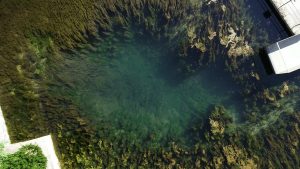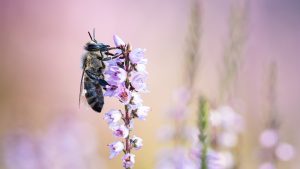Perfectly adapted to sand
On warm days you can often see animals scurrying away in open places bathed in sunshine. It could be sand lizards (Lacerta agilis), which you can sometimes see basking in the sun – but they immediately get to safety as soon as they detect a danger. In addition to open sand areas, sand lizards also need good hiding places so that they feel comfortable in their habitat.
The open sand areas are important for reproduction, because sand lizards allow their eggs to hatch from the heat of the sun. To do so, the females dig small holes in the sand between mid-May and late July and lay 5 to 15 eggs in them. The young sand lizards hatch after about 2 months.
In contrast to the generally more common and smaller forest lizard, a typical, ladder-like pattern of light stripes and dark “cross bars” can be seen on the middle of the back of the sand lizard. The dark spots on the back of sand lizards almost always contain a white core. During the mating season until July, the males can be easily recognised by their bright green coloured flanks.
According to the Federal Nature Conservation Act, sand lizards are strictly protected. They must therefore not be taken from nature, injured or killed. In North Rhine-Westphalia, the sand lizard is on the red list and is considered “critically endangered”. In the Senne, however, it is not uncommon in suitable habitats.
Another reptile is much rarer and more difficult to observe: The smooth snake (Coronella austriaca). With a maximum length of 90 cm, it is the smallest native snake species in Germany and the only snake that we find in the Senne. It is one of the strangler snakes, is non-toxic and therefore poses no danger to humans.
Similar to the sand lizard, the smooth snake inhabits structured heathlands in which it leads a secret existence. With luck you can discover them in summer when crossing hiking trails. In the Senne, the smooth snake benefits from the good population of the sand lizard, because alongside mice these are among their main prey.








